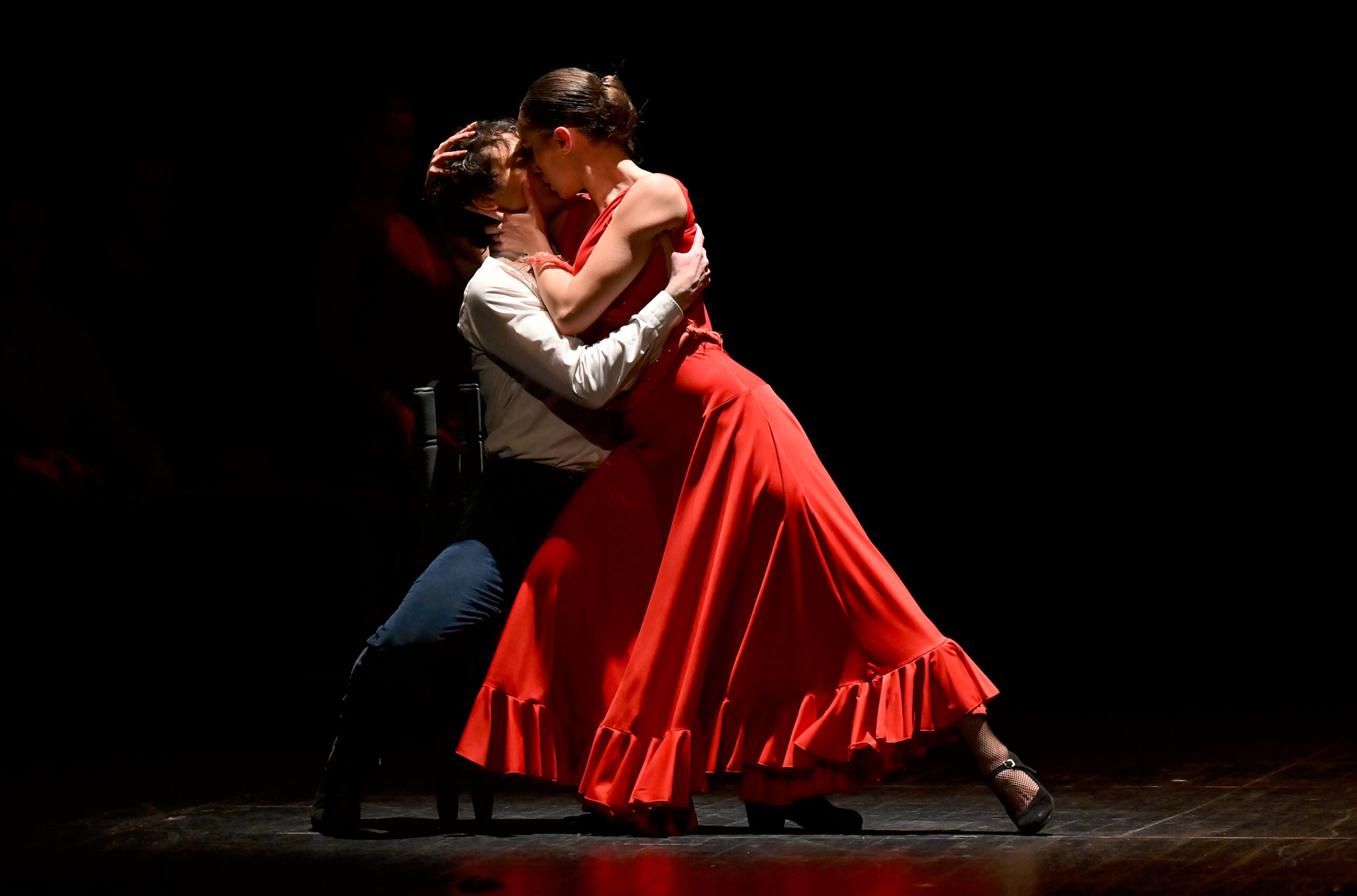
Antonio Gades (1936-2004), dance legend, is a leading figure in twentieth-century European dance and theater.
Dancer, choreographer, Gades’ work sought to restore the essence of each step, defined by tradition, by folklore, by the people. His work can be seen as an attempt to study classical and popular Spanish culture in depth, to glorify it by honoring its roots and its sources. He was always aware that his work represented the cultural heritage of his people above all, and that he should tread carefully in order to respect its integrity, in order not to alter it.
His greatest achievement was to transform flamenco into a dramatic art, to dramatize his choreography, and disregard that flashy and gratuitous bravura that sometimes threatens to invade the flamenco scene. Gades had a vision of inclusive dance:
«people think that to dance you have to be young, handsome, tall/, thin ..that’s’ not true at all. Dance expresses an emotion and anyone can do it. One of the reasons our company is so successful is probably because it is truly human. It is not a company that dances, it’s a people that dances».
His meeting in 1981 with filmmaker Carlos Saura would be decisive in promoting Gades’ choreography, and together they brought the ballet Bodas de Sangre (1974) to the big screen. The film was massively successful worldwide. Their next project was the movie Carmen, which was followed by a ballet of the same name, and then El Amor Brujo and the ballet Fuego closed out this fruitful partnership that popularized flamenco across the world. Then came Fuenteovejuna (1994), still considered the high point of Spanish dance today and also, unfortunately, Gades’ last work.
He died in 2004 and his ashes rest in the Segundo Frente Oriental Frank País Mausoleum in Cuba.
Despite leaving a part of his work immortalized on film, the Foundation that bears his name works to pass on Gades’ stylistic legacy and choreography to a new generation of dancers, students, and the general public. Otherwise, his work would have disappeared.
Along with these efforts, the Foundation has gathered and safeguards an important documentary archive. This archive reflects an era in which dance took on a monumental importance in the vision the world had of Spain after it became a democracy.




